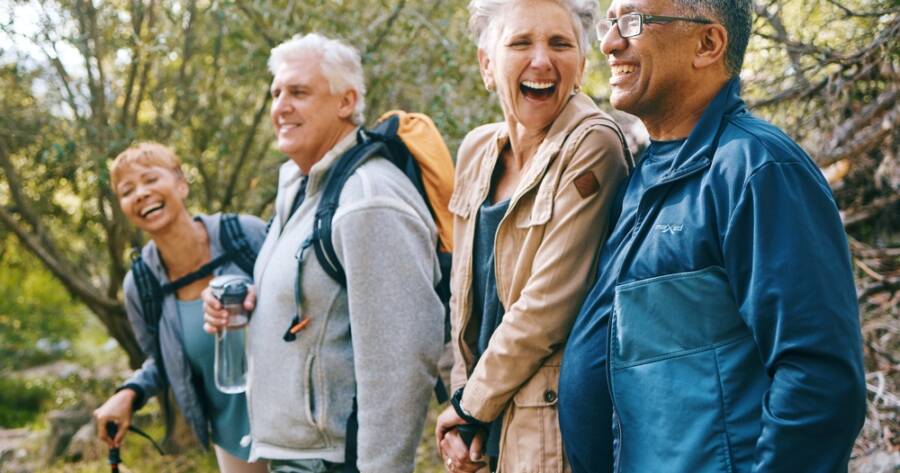Staying active is one of the best ways to maintain strength, flexibility, and overall well-being as you age. Movement doesn’t have to be strenuous to be effective—low-impact exercises can keep joints healthy, improve balance, and boost energy levels without unnecessary strain. From swimming and walking to yoga and chair exercises, staying fit can be enjoyable and accessible at any stage of life. The key is finding activities that keep the body moving while bringing joy.
Walking: The Ultimate Low-Impact Workout
Walking is one of the simplest yet most effective exercises for seniors. It strengthens the heart, improves circulation, and supports joint health without putting excessive stress on the body. Whether taking a leisurely stroll around the neighborhood or hiking a scenic trail, walking can be easily adapted to different fitness levels. Adding a walking buddy or joining a local walking group makes it more enjoyable and provides social benefits as well.
For those looking to enhance their routine, interval walking—alternating between a comfortable pace and a slightly brisker speed—can help improve endurance. Using walking poles can also increase stability and provide a full-body workout. No equipment is needed, just a good pair of shoes and a commitment to staying active.
Swimming and Water Aerobics: Gentle on Joints, Great for Strength
Water-based exercises are perfect for seniors who want a full-body workout without putting pressure on their joints. Swimming improves cardiovascular health, strengthens muscles, and enhances flexibility while reducing the risk of injury. The buoyancy of water supports the body, making it an excellent choice for those with arthritis or mobility concerns.
Water aerobics classes offer guided, low-impact workouts that target strength, endurance, and balance. Many community centers and fitness clubs provide senior-friendly classes, creating an opportunity to stay active while socializing. Even simple movements like leg kicks, arm circles, and walking through the water can provide significant health benefits while feeling refreshing and fun.
Yoga and Stretching: Enhancing Flexibility and Balance
Yoga is an excellent way for seniors to improve flexibility, balance, and mental well-being. Gentle styles such as Hatha and chair yoga focus on slow movements, deep breathing, and mindful stretching. These exercises help reduce stiffness, alleviate joint pain, and improve posture, making daily movements easier and more comfortable.
Stretching is just as important for mobility and injury prevention. Simple routines done in the morning or before bed can relieve muscle tension and improve overall flexibility. For those with limited mobility, seated stretches or wall-assisted movements offer a safe way to enhance range of motion. Consistently practicing yoga and stretching can lead to greater independence and better overall well-being.
Strength Training: Maintaining Muscle and Bone Health
As the body ages, muscle mass naturally decreases, which can lead to weakness and balance issues. Strength training helps counteract this loss, keeping muscles strong and bones healthy. Light weights, resistance bands, or even bodyweight exercises like squats and wall push-ups can build strength without strain.
Many senior-friendly strength routines focus on functional movements that improve everyday activities, such as standing up from a chair or lifting groceries. A few sessions per week can significantly enhance stability and reduce the risk of falls. Strength training doesn’t mean lifting heavy weights—it’s about maintaining the strength needed for an active, independent lifestyle.
Chair Exercises: A Safe and Accessible Way to Stay Active
For those with limited mobility or balance concerns, chair exercises provide a safe way to stay active. These seated workouts help maintain circulation, improve muscle tone, and enhance flexibility without the risk of falling. Movements like seated leg lifts, arm circles, and shoulder rolls can be done while watching TV or listening to music.
Adding light hand weights or resistance bands can increase the intensity for those looking for a challenge. Many senior centers and online fitness programs offer guided chair exercise classes that cater to different ability levels. Staying active doesn’t require standing—simple movements from a seated position can still offer excellent health benefits.
Dancing: Fun, Social, and Great for Coordination
Dancing is a fantastic way to stay active while having fun. It improves cardiovascular health, strengthens muscles, and enhances coordination—all while lifting the spirit. Whether it’s ballroom dancing, line dancing, or simply swaying to favorite tunes at home, movement through dance is a joyful way to exercise.
Many community centers and senior groups offer dance classes tailored to different abilities, from gentle movements to more energetic styles. Dancing with a partner or in a group setting adds a social component, which can improve mood and reduce stress. Whether structured or freestyle, dancing keeps the body moving and the mind engaged, making it an enjoyable way to stay fit.
Movement That Supports Longevity and Happiness
Staying active doesn’t have to be difficult or exhausting—it should be enjoyable and accessible. Low-impact exercises like walking, swimming, yoga, and strength training keep the body strong while reducing the risk of injury. The key is finding activities that fit individual needs and preferences so that movement becomes a regular part of life. Staying active as you age not only improves physical health but also enhances mental well-being and overall happiness.

